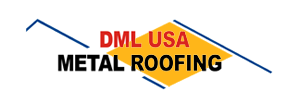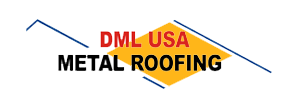Fire resistant roofing is crucial, especially in areas prone to wildfires like California, Colorado, and Nevada. With increasing wildfire incidents, ensuring your home has fire-resistant roofing can be a lifesaver. These roofs not only provide protection but also add to the home’s value by potentially reducing insurance costs.
Here’s a quick rundown of top fire-resistant roofing options:
- Metal Roofing: Lightweight, non-combustible, Class A rating.
- Concrete and Clay Tiles: Durable and robust, but heavier.
- Slate Tiles: Beautiful and extremely durable, yet requires additional structural support.
- Asphalt Shingles: Affordable and moderately fire-resistant.
I’m Adam Kadziola from DML USA Metal Roofing, dedicated to providing the best in fire resistant roofing solutions. With over a decade of experience, I know what it takes to protect your home with durable and efficient roofing materials. Up next, let’s dig deeper into the specifics of each roofing option.

Understanding Fire Resistant Roofing
When it comes to protecting your home from wildfires, fire-resistant roofing is your first line of defense. Choosing the right roofing material can make all the difference in safeguarding your home. Let’s break down the essentials.
Fire-Resistant Materials
There are various materials to consider, each offering different levels of fire resistance. The key is to understand their fire ratings and whether they are non-combustible or combustible.
Non-Combustible Materials: These materials, like metal roofing, do not catch fire easily and do not contribute to spreading flames. They are ideal for areas prone to wildfires.
Combustible Materials: These materials can catch fire but might still offer protection if treated or combined with other fire-resistant layers. For example, some asphalt shingles achieve a high fire rating through special coatings.
Class A, B, C Ratings
Roofing materials are classified based on their ability to withstand fire exposure, as per the UL790 (ASTM E 108) test.
Class A: Offers the highest level of fire resistance. These materials can withstand severe fire exposure without catching fire. Examples include metal tiles and fiberglass-based asphalt shingles.
Class B: Provides moderate protection. These materials can handle some fire exposure but might ignite under prolonged extreme heat.
Class C: Offers basic protection against light fire exposure. These materials are less ideal for high-risk areas.
Non-Combustible vs. Combustible Roofing
The distinction between non-combustible and combustible roofing is crucial. Non-combustible roofing materials like metal inherently resist ignition. This makes them an excellent choice for reducing fire risk.
On the other hand, combustible roofing materials might still achieve a high fire rating if treated or used in combination with other protective layers. However, they can potentially ignite, especially if the protective layer is compromised.
In summary, understanding the fire ratings and material types is essential for choosing the right fire-resistant roofing. Up next, we’ll explore the top fire-resistant roofing materials and their unique benefits.
Top Fire Resistant Roofing Materials
When it comes to protecting your home from wildfires, choosing the right fire-resistant roofing material is crucial. Here’s a look at some of the top options available:
Fiberglass-Based Asphalt Shingles
Fiberglass-based asphalt shingles are a popular choice for many homeowners, offering a balance of affordability and fire resistance. These shingles are composed of a fiberglass mat coated with asphalt and mineral granules. They achieve a Class A fire rating, the highest level of fire protection. For those seeking a touch of luxury, CertainTeed’s Highland Slate shingles offer the appearance of natural slate without the hefty price tag. These shingles not only provide excellent fire resistance but also withstand winds up to 110 mph.
Metal Roofing
Metal roofing is renowned for its durability and non-combustible nature. These roofs are often made from materials like aluminum, steel, or copper, which naturally resist catching fire. When paired with a fire-resistant underlayment, metal roofing can achieve a Class A rating. Metal roofs also reflect sunlight, which can reduce energy costs. Their sleek, modern appearance can improve the aesthetic value of any home.

Clay and Concrete Tiles
Clay tiles have been used for centuries and are celebrated for their natural beauty and fire resistance. These tiles are non-combustible, making them an excellent choice for fire-prone areas. However, seal any openings in barrel-shaped tiles to prevent embers from entering. Concrete tiles, formed from a mixture of cement, sand, and pigments, offer similar fire-resistant properties. Both clay and concrete tiles provide excellent insulation and weather resistance, making them a durable option for any home.
Slate Roofing
Slate roofing is often considered the pinnacle of roofing materials due to its elegance and longevity. Slate is a natural stone, making it inherently non-combustible and a natural choice for a Class A rating. High-quality slate, like the S1 grade offered by Evergreen Slate Company, can last 75 years or more with minimal maintenance. Its natural beauty and ability to withstand extreme weather conditions make slate a premium choice for those looking to invest in a long-lasting, fire-resistant roof.
Synthetic Roofing Shingles
For those seeking eco-friendly options, synthetic roofing shingles offer a sustainable alternative. These shingles are often made from recycled materials like rubber and plastic and are designed to mimic the appearance of traditional roofing materials. Synthetic shingles offer excellent fire resistance and are often treated to achieve a Class A rating. They are lightweight, durable, and available in various colors and styles to suit any home’s aesthetic.
In conclusion, selecting the right fire-resistant roofing material involves considering factors like fire ratings, material properties, and aesthetic preferences. Each of these materials offers unique benefits, making them suitable choices for safeguarding your home against wildfires.
Benefits of Fire Resistant Roofing
Choosing fire-resistant roofing is not just about safety—it’s about making a smart investment for your home. Let’s explore the key benefits that make these roofing materials a top choice for many homeowners.
Durability
Fire-resistant roofing materials, such as metal, clay, and slate, are known for their exceptional durability. They are designed to withstand harsh weather conditions, including high winds, heavy snow, and hail. For instance, metal roofing can endure winds up to 120 mph, providing peace of mind during stormy seasons. This durability means fewer repairs and replacements, saving you money in the long run.
Energy Efficiency
Another significant advantage of fire-resistant roofing is energy efficiency. Materials like metal roofing reflect sunlight, helping to keep your home cooler during the hot summer months. This reflective property can reduce cooling costs by up to 40%, as reported by the Cool Metal Roofing Coalition and the Oak Ridge National Laboratory. Not only does this decrease your energy bills, but it also lessens your home’s environmental impact by reducing reliance on air conditioning.
Aesthetic Appeal
While safety and efficiency are crucial, the aesthetic appeal of your roof matters too. Fire-resistant roofing materials come in various styles and colors to complement any home design. Clay tiles offer a classic, timeless look, while metal roofing can provide a sleek, modern appearance. Synthetic shingles can mimic the look of natural materials like wood or slate, offering homeowners a beautiful, fire-safe option. With these choices, you don’t have to sacrifice style for safety.

Incorporating fire-resistant roofing into your home not only improves safety but also brings added benefits of durability, energy efficiency, and aesthetic value. As wildfires become more common, investing in these materials is a wise decision for protecting your property and improving your home’s overall performance.
Frequently Asked Questions about Fire Resistant Roofing
What is the best fire-resistant roofing material?
When it comes to fire-resistant roofing, Class A materials are the gold standard. These materials offer the highest level of protection against severe fire exposure. Among these, non-combustible materials like metal roofing stand out. Metal roofing is inherently resistant to ignition and does not contribute to the spread of fire, making it an excellent choice for fire-prone areas. Additionally, metal roofs can withstand direct flame exposure without catching fire, providing superior protection.
How often should fire-resistant roofing be maintained?
Regular maintenance is crucial to ensure the longevity and effectiveness of your fire-resistant roofing. Inspections should be conducted at least twice a year to check for any damage or wear. Pay special attention to removing debris like leaves and branches, as these can be combustible and may compromise your roof’s fire resistance. Keeping your roof clean and well-maintained not only improves its fire-resistant properties but also extends its lifespan.
Can fire-resistant roofing reduce insurance premiums?
Yes, installing fire-resistant roofing can potentially reduce your insurance premiums. Insurance companies often recognize the added safety benefits of non-combustible materials, such as metal roofing, and may offer lower rates as a result. It’s advisable to consult with your insurance provider to explore any discounts available for having a Class A fire-resistant roof. This can lead to significant savings over time and provide additional financial incentives for choosing fire-safe materials.
Incorporating these practices and materials can greatly improve the safety and cost-effectiveness of your home, making fire-resistant roofing a wise investment for both peace of mind and potential financial benefits.
Conclusion
Investing in fire-resistant roofing is not just about aesthetics or immediate cost savings; it’s a crucial step toward long-term safety and peace of mind. With wildfires becoming more frequent and intense, especially in the western United States, protecting your home from fire damage is more important than ever.
At DML USA Metal Roofing, we understand the importance of safety in home construction. Our metal roofing solutions offer top-tier fire resistance, providing a robust defense against flying embers and direct flames. This makes them an ideal choice for homeowners looking to safeguard their properties against the threat of wildfires.
Fire prevention extends beyond just having a fire-resistant roof. It’s about creating a comprehensive safety strategy for your home. This includes regular maintenance, like clearing debris from your roof and gutters, and ensuring that your roof is in good condition. These steps help maintain the integrity of your fire-resistant materials and maximize their effectiveness.
Moreover, choosing fire-resistant materials like those from DML USA Metal Roofing can also be a smart financial decision. Not only do they offer durability and longevity, but they may also lead to lower insurance premiums. Many insurance companies recognize the added protection these materials provide and offer reduced rates, making it a financially sound investment.
In conclusion, prioritizing fire safety with DML USA Metal Roofing is an investment in your home’s future. It ensures that you are prepared for whatever nature throws your way, providing both safety and potential savings. Protect your home and your peace of mind with our high-quality, fire-resistant roofing options.

